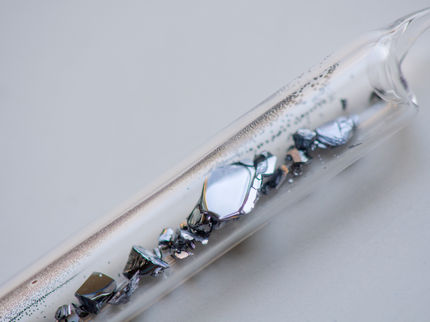UA Physicists Find Key to Long-Lived Metal Nanowires
Advertisement
University of Arizona physicists have discovered what it takes to make metal 'nanowires' that last a long time. This is particularly important to the electronics industry, which hopes to use tiny wires -- that have diameters counted in tens of atoms -- in Lilputian electronic devices in the next 10 to 15 years. Although researchers in Japan, the Netherlands, Spain, Brazil and the United States have had some success at making nanowires, the wires don't last long except at low temperatures. What researchers need are robust nanowires that will take repeated use without failing at room temperature and higher.
UA post-doctoral associate Jerome Buerki and physics Professors Charles Stafford and Daniel Stein developed a theory that explains why nanowires thin away to nothing at non-zero temperatures. Energy fluctuations in a nanowire at higher temperatures create a collective motion, or "soliton," among atoms in the wire. As each of these kink-like structures propagates from one end of the wire to the other, the wire thins.
"Our theory makes one very simple prediction, which is that the energy barrier that creates these kinks depends, very simply, on the square root of the surface tension of the wire," Stafford said. "That's quite counterintuitive, because naively you'd think that surface tension should actually make the filament unstable. But the larger the surface tension, the more stable the wire, regardless of the radius of the wire."
Creation of solitons, or kinks, in the wire depends on two competing forces - the surface tension and a quantum force that holds the wire together, Stafford explained. "It just so happens that the competition between those two forces leads to a kind of universal energy barrier which goes as the square root of the surface tension."
The discovery explains why experimentalists have had more luck at making longer-lived nanowires using such noble metals as gold and silver rather than sodium or other alkali metals. According to the UA physicists' theory, copper is the best metal for making nanowires because it has the largest natural surface tension of the nanowire metals.
Original publication: "Theory of Metastability in Simple Metal Nanowires"; Physical Review Letters 2005.
Most read news
Topics
Organizations
Other news from the department science

Get the chemical industry in your inbox
By submitting this form you agree that LUMITOS AG will send you the newsletter(s) selected above by email. Your data will not be passed on to third parties. Your data will be stored and processed in accordance with our data protection regulations. LUMITOS may contact you by email for the purpose of advertising or market and opinion surveys. You can revoke your consent at any time without giving reasons to LUMITOS AG, Ernst-Augustin-Str. 2, 12489 Berlin, Germany or by e-mail at revoke@lumitos.com with effect for the future. In addition, each email contains a link to unsubscribe from the corresponding newsletter.




























































